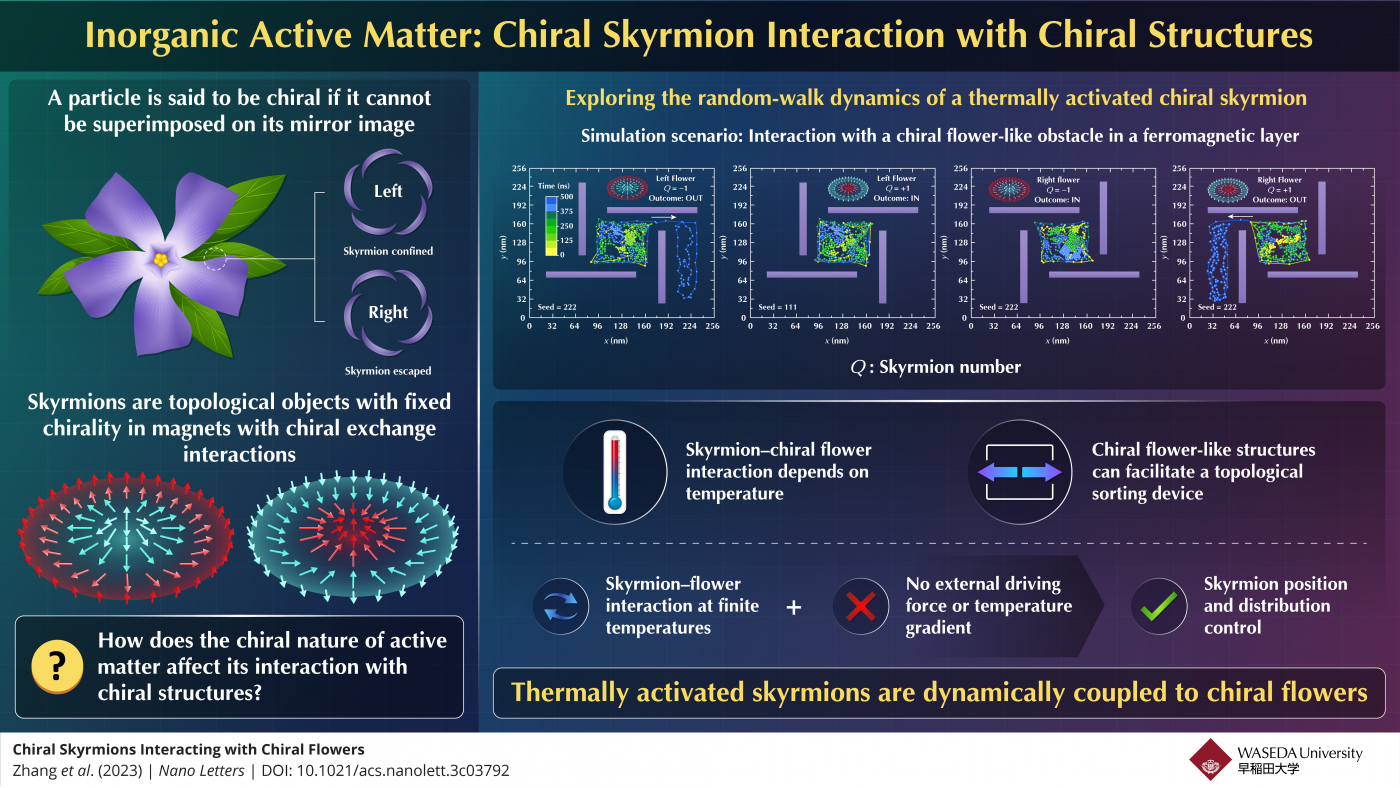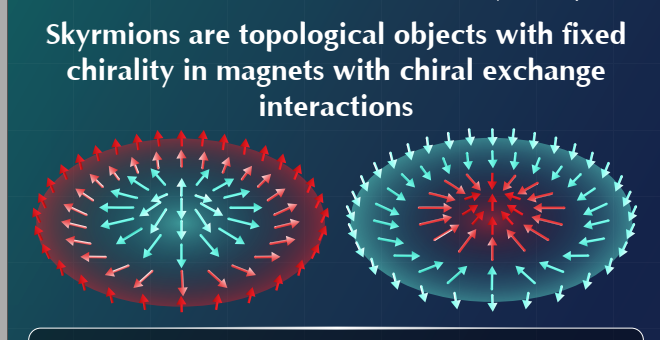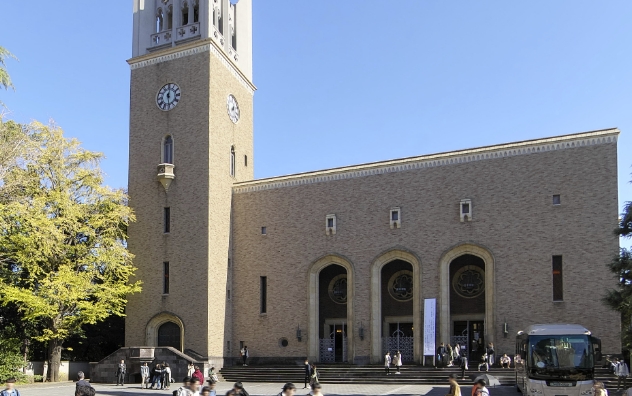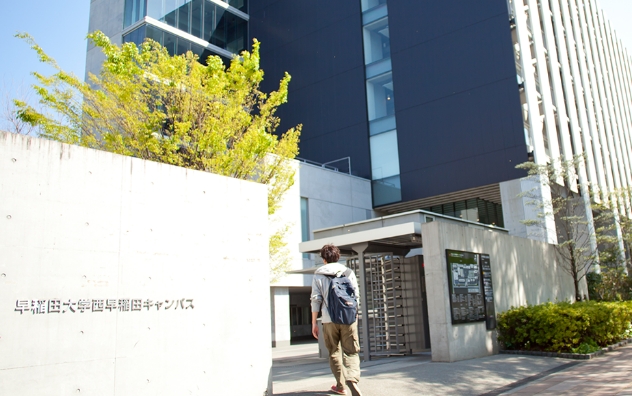Scientists Study the Behaviors of Chiral Skyrmions in Chiral Flower-Like Obstacles
Tue, Feb 13, 2024-
Tags
Scientists Study the Behaviors of Chiral Skyrmions in Chiral Flower-Like Obstacles
They find that the system behaves like a topological sorting device, which may create ordered results from disordered motion
Chiral skyrmions are a special type of spin textures in magnetic materials with asymmetric exchange interactions. They can be treated as quasi-particles and carry integer topological charges. Scientists from Waseda University have recently studied the random walk-behaviors of chiral skyrmions by simulating their dynamics within a ferromagnetic layer surrounded by chiral flower-like obstacles. The simulations reveal that the system behaves like a topological sorting device, indicating its use in information processing and computing devices.

Title: The interaction of chiral skyrmions with chiral flowers. Caption: Researchers demonstrate that the phenomenon of the dynamic coupling of thermally activated skyrmions to chiral flowers can pave the way for a topological sorting device. Credit: Masahito Mochizuki from Waseda University.
In nature, the collective motion of some birds and fish, such as flocks of starlings and shoals of sardines, respectively, can generate impressive dynamic phenomena. Their study constitutes active matter science, which has been a topic of great interest for the past three decades. The unique collective dynamics of active matter are governed by the motion of each individual entity, the interactions among them, as well as their interaction with the environment. Recent studies show that some self-propelling molecules and bacteria show circular motion with a fixed chirality (the property of an object where it cannot be superimposed upon its mirror image through any number of rotations or translations), which can enable the selection of molecules and bacteria with specific chirality based on their dynamics. However, there is a lack of research on active matter-like objects in non-biological magnetic and ferroelectric materials for electronic device applications.
In this regard, chiral skyrmions are promising. They are a special type of spin textures in magnetic materials with asymmetric exchange interactions, which can be treated as quasi-particles. They carry integer topological charges and have a fixed chirality of either +1 or –1.
Recently, a group of scientists, led by Professor Masahito Mochizuki from the Department of Applied Physics at Waseda University and including Dr. Xichao Zhang from Waseda University and Professor Xiaoxi Liu from Shinshu University, has extensively studied the active matter behaviors of chiral skyrmions. Their paper was made available online on December 6, 2023, and published in Volume 23, Issue 24 of the journal Nano Letters on December 27, 2023.
In this study, the scientists placed chiral skyrmions within chiral nanostructure obstacles in the shape of a simple chiral flower. They then studied the random-walk dynamics of the thermally activated skyrmion interacting with the chiral flower-like obstacle in a ferromagnetic layer, which could create topology-dependent outcomes. “Our research demonstrates for the first time that magnetic chiral skyrmions exhibit active matter-like behaviors even though they are of non-biological origin and even merely intangible spatial patterns,” says Prof. Mochizuki, highlighting the novelty of their study.
The skyrmion with chirality –1 has the potential to leave a left chiral flower, and the skyrmion with a chirality of +1 has the potential to leave a right chiral flower. The researchers conducted a series of simulations to observe how skyrmions would behave in both cases at different temperatures: 100 K, 150 K, 180 K, and 200 K. They set the simulation time as 500 ns, with a time step of 0.5 ns. The team found that depending on the combination of variables, the skyrmion either remains within the obstacle or escapes it. Since the motion of the skyrmion is due to temperature-dependent Brownian motion, which is disorderly in nature, this is an interesting case of getting an orderly result through disordered motion. Notably, this system can be used to develop a topological sorting device.
When asked about the long-term implications of their work, Prof. Liu remarks: “Our research results may be useful for building future information processing and computing devices with high storage density and low power consumption.”
“In the long term, they may provide guidelines for the design and development of non-conventional electronic and spintronic hardware, where the information is carried by topological spin textures in nanostructures. This achievement is expected to improve people’s lives as they would be able to process information in an energy-efficient manner, leading to a greener society,” concludes Dr. Zhang.
Reference
Authors
Xichao Zhang1, Jing Xia2, Oleg A. Tretiakov3, Motohiko Ezawa4, Guoping Zhao5, Yan Zhou6, Xiaoxi Liu2, and Masahito Mochizuki1
Title of original paper
Chiral Skyrmions Interacting with Chiral Flowers
Journal
DOI
Affiliations
1 Department of Applied Physics, Waseda University
2 Department of Electrical and Computer Engineering, Shinshu University
3 School of Physics, The University of New South Wales
4 Department of Applied Physics, The University of Tokyo
5 College of Physics and Electronic Engineering, Sichuan Normal University
6 School of Science and Engineering, The Chinese University of Hong Kong
About Professor Masahito Mochizuki
Masahito Mochizuki has been a Professor in the Department of Applied Physics at the Graduate School of Science and Engineering at Waseda University in Tokyo, Japan since 2017. He completed his Ph.D. from The University of Tokyo in 2003. His research interests include new physical properties and phenomena created by quantum fluctuations in orbit, non-equilibrium dynamics and nonlinear responses, and magnon excitation by light and new magnon physics. He has published around 100 research papers, which have been cited over 4,500 times. He is affiliated with the Physical Society of Japan, the Society of Applied Physics, and the Magnetic Society of Japan.
About Junior Researcher (Assistant Professor) Xichao Zhang
Xichao Zhang is a Junior Researcher (Assistant Professor) at the Faculty of Science and Engineering at the Waseda Research Institute for Science and Engineering. He is a member of Prof. Masahito Mochizuki’s group. He received his Ph.D. from Shinshu University in 2018, and was a JSPS Postdoctoral Fellow at Shinshu University from 2020 to 2022. He also worked at the University of Hong Kong and the Chinese University of Hong Kong (Shenzhen). His research focuses on the computational study of spin textures, spin dynamics, and spintronic devices. He is a Senior Member of the IEEE, and a member of the American Physical Society and the Physical Society of Japan.
About Professor Xiaoxi Liu from Shinshu University
Xiaoxi Liu is a Professor at the Department of Electrical and Computer Engineering at Shinshu University since 2013. He completed his education from Lanzhou University in China, receiving a Ph.D. degree in Solid State Physics. He worked as a Postdoctoral Assistant at the University of Glasgow, UK. His major research field is electronic and electric materials. He currently works on spintronics, with a focus on magnetic skyrmions and topological spintextures. He has over 250 research articles on Google Scholar to his credit, which have received over 5,600 citations.














